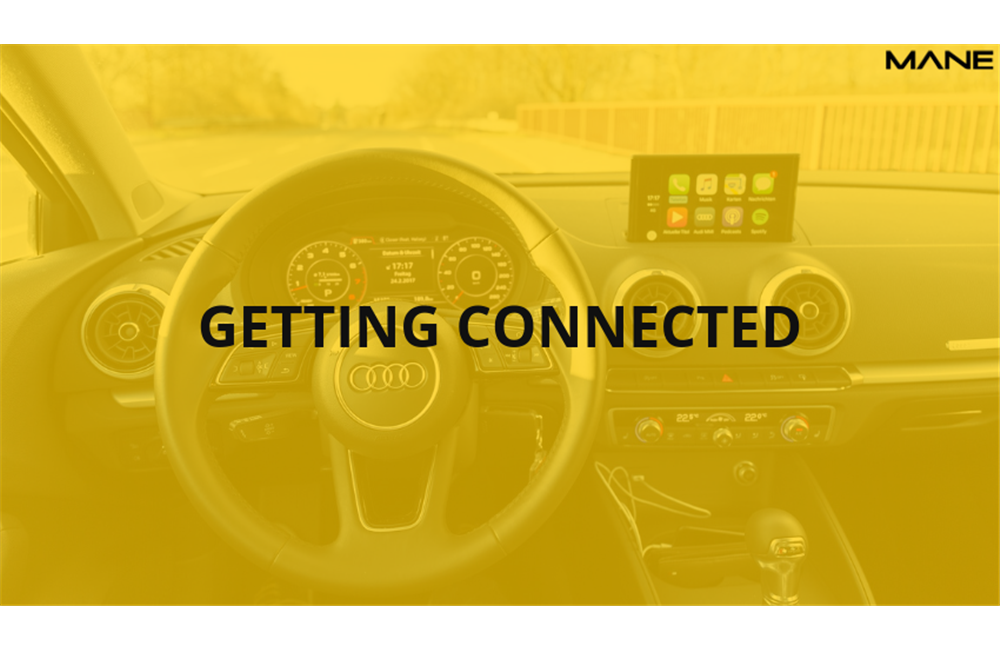Getting Connected
24 Jun, 201910 minsA connected car is one that has 24/7 internet access. This allows the car to share data with...

A connected car is one that has 24/7 internet access. This allows the car to share data with other devices, both inside and outside the vehicle. Often, the vehicles are fitted with special technologies that provide benefits for the driver.
The first connected car was made in 1996 by General Motors however since then ‘Car Connectivity’ has developed and companies are now leading a radical transformation in the automotive industry to give us a driving experience that will be like nothing that’s ever been done before.
Best four connectivity features on the market as of 2019:
1. Audi
Audi’s new connectivity system goes above and beyond the simple navigation and music streaming services. One notable high-tech function is picture destinations: Send a geotagged photo to the system from your smartphone, and Audi’s navigation system will provide a route. No address is necessary. Not only this, but they also have a 4G LTE connection, allowing passengers to connect to its mobile hot spot.
2. BMW
BMW have launched an in-car voice-controlled intelligent assistant. The platform has been described as “the start of a new era” by BMW Group which drivers will now be able to operate their car and access its functions and information purely by speaking. The system will be able to learn routines and habits, applying them in the appropriate context to perform tasks like turning the heating on.
3. Kia
Kia have added a UVO intelligence system to their Sorento model. This allows for customers to download an app onto their phone which can start the Sorento remotely by pushing a few buttons. In addition to this you can lock or unlock the doors remotely from anywhere in the world because it has a no-range limit.
4. Wireless Charging
Several companies have included wireless charging in their cars. A few of these companies are Audi, BMW, Ford and Mercedes-Benz. This helps keep users smartphones powered and cabin clutter-free. Simply by placing the device in the slot available.

On a global scale, SBD forecasts that in addition to connectivity becoming ubiquitous by 2025, in actual fact many cars will continue to have multiple forms of connectivity during this period. This will occur due to the popularity of having an embedded solution becomes more appealing and more affordable.
It is predicted that tethered solutions will also start to decline as embedding increases due to it being more user-friendly. However, saying that major tethered solutions include Apple Carplay and Google’s Android Auto. Are they too limited? Some would say so. It will be exciting to see how tethered solutions change over the coming years in order to keep up with the growing demand for embedded solutions.
For embedded solutions, the short term growth in many markets such as Europe, Brazil and Russia will be primarily caused by government legislation. In the long-term shared data plans and web-based apps will play a strong role in ensuring that embedded solutions grow in the future. SBD forecasts that globally the fitting of embedded telematics on new cars will rise rapidly from 2015 onwards, surpassing 50% by 2020 and 90% by 2025.

The number of use cases for connected cars has steadily increased over time, as consumers, vehicle manufacturers, governments and 3rd parties each begin to understand the value of car connectivity. With different types of in-car connectivity on the market, many applications/segments will continue to grow over the coming years. These include safety, security, convenience, EV services and many more. It is expected that all of these types of applications will grow over the coming years, with some more likely to grow faster than others (e.g. navigation and infotainment).
Exciting times ahead for the in-car connectivity market.


